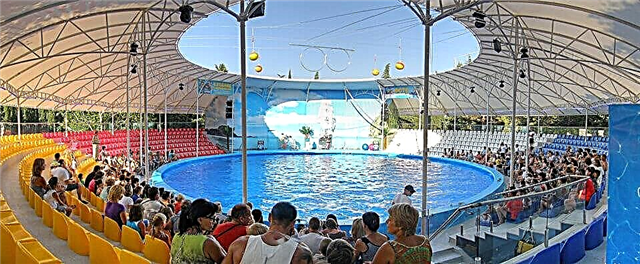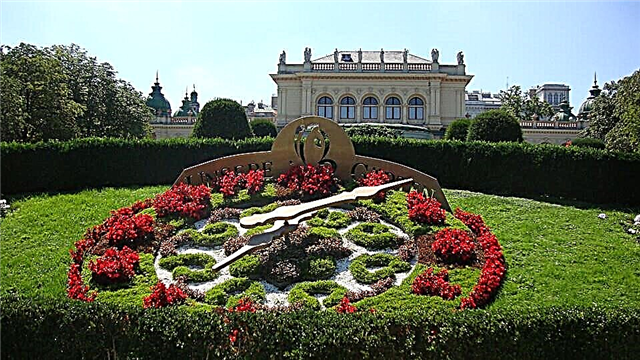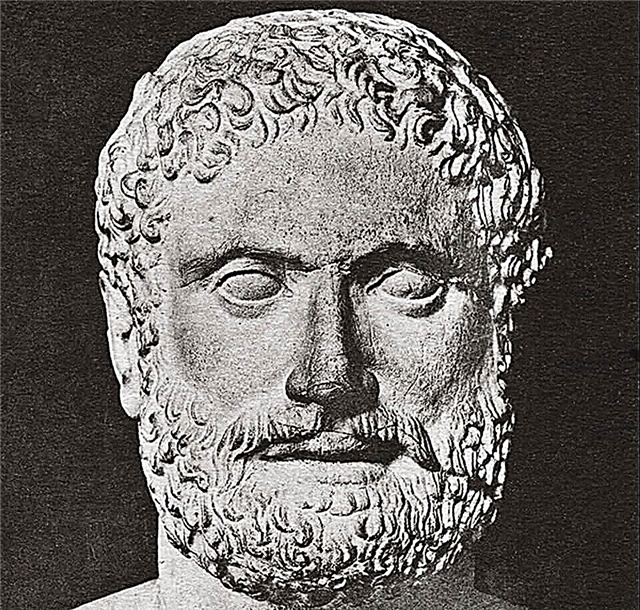The Dionysus Theater in Athens is the prototype of modern theaters. It was here that a special art was born, which is very popular today. Both the equipment and the acoustics of the site were first tested in Hellas. The structure has survived to this day damaged. But modern architects have carried out painstaking restoration, and now tourists can admire the unique monument. A visit to the facility allows you to immerse yourself in ancient Greece, to understand the customs and habits of the inhabitants of Athens.
Construction history

Polis in the 4th century BC ruled by the enlightened head - Pisistratus. One of his favorite gods was Dionysus. This Olympian patronized fun, winemaking, entertainment. And Pisistratus ordered to build an altar in his honor, inside which there was a statue of Dionysus. Originally it was made of wood, later it was replaced with the image of a god made of bone and decorated with gold. Sacrifice in honor of Dionysus is impossible without dancing and songs.
Therefore, a small area for celebrations was set up next to the altar. It was she who became the beginning of the theater of Dionysus. The starting material for the site is wood. Subsequently, the stage was made of stone. This was an innovation of the time: stone structures served longer. The theater became very popular: on its platforms, the works of favorite authors were presented: Euripides, Aeschylus, Aristophanes, Sophocles.
And a visit to the site was publicly available: any resident could watch the performance for free. Only special days were suitable for performances: Small Dionysias or Great Dionysias. These days no one worked: the inhabitants of Athens participated in the sacrifice to the cheerful god and watched performances in his honor. The rest of the time the theater was closed.
Architecture

Restoration of the architecture is quite simple: this place was especially popular with the Athenians, therefore it was often described in documents.
The main features of the structure:
- There was a stage below. At first it was made of wood, then it deteriorated, and it was replaced by a stone one.
- The armchairs rose like an amphitheater and reached the very Acropolis. They were also hewn out of stone, replacing the original wooden ones. The capacity of the auditorium was impressive: 17,000 visitors could watch the performances at the same time. (At the time, just over 40,000 people lived in Athens.)
- There was no roof at the Dionysus Theater, so the performances were held in the open air. Comedies or tragedies lasted 8-10 hours, natural light was not enough, and it was replaced by torches.
- The spread of gladiator fights in the 1st century required changes in architecture. To protect the audience, a high marble side was made, and a metal grate was placed on it.
- In the 2nd century, the orchestra changed: Emperor Nero ordered to supplement it with images of paintings from myths and stucco elements.
The first row of 67 seats for distinguished guests is not well preserved. But some of the chairs have embossed inscriptions with the names of visitors.
Peculiarities
The theater served not only as a place for sacrifices to Dionysus and subsequent entertainment. Drama and comedy writers competed with each other for the best production. All results were recorded on didascals and then handed over to the archive. Subsequently, the performances were replaced by gladiator fights. But the popularity of the tetra of Dionysus did not diminish: there were enough people who wanted to get to the performance.
Spectator seats

The seats for spectators encompassed the stage in a semicircle. In order for those sitting in the back to also see what is happening on the stage, the subsequent rows towered over the previous ones. Each row had 67 marble seats, and there were 64 rows. Unfortunately, the modern Theater boasts only 20 rows. Places in rows 1-2 were intended for distinguished visitors. So that the chair would not be accidentally occupied, the name of the guest was knocked out on it.
The honorary place of Emperor Hadrian was in the 2nd row. And Nero preferred not to sit in the hall, but to perform on stage. When theater attendance became paid, the government allocated a special subsidy to poor citizens so that they could also participate in the holiday. The settlers also received the right to come to the performances. The spectators took their seats in advance: often real battles arose for the right to take a seat.
Organization of celebrations

In order for such a large-scale action to take place, the efforts of different people were required:
- The duties of the priests were assigned to members of the government. A commission was elected - the archons. This commission disposed of part of the state money that was allocated for the preparation of the celebrations, and played the role of a censor. The Archons were elected for six months, until the next Dionysius.
- The archons chose 10 khoregs (play directors). Horeg must be a wealthy Hellene, because he covered all the main expenses for the production (making decorations and masks, sewing costumes) from his own funds. If the choreographer hired additional actors, he was obliged to pay for their services himself.
- The authors presented their works to the archon. At the same time, it was completely indifferent whether the author was a poet or a mathematician, the main thing was to write an interesting play. The archon chose the worthy ones, and at the end of the competition he determined the winners.
- The choir accompanied the performance. The khoreg paid for it from his own funds.
- The audience reacted violently to the performance: they whistled, applauded, kicked. This expression of emotion was acceptable.
Interestingly, each piece was shown only once. The repertoire of Dionysius was followed by all the inhabitants of the polis, therefore the responsibility of the authors and archons was great.
Place of People's Assembly

Athens is a democratic city. And on all important points, ecclesias, meetings of citizens were held. Before the opening of the Theater of Dionysus, the Pnyx Hill was used for these events. But the theater accommodated more people and had better acoustics, so ecclesias began to be held there. Only trustworthy male citizens over 20 years old were allowed to attend the meetings. There were black lists of unreliable people: those included there did not receive a pass - a special plaque. Citizens' compliance with the blacklist was strictly controlled. In order for the ecclesias to be successful, offerings were first laid on the altar to the Olympians, and the Greeks who came prayed for the grant of grace.
Orchestra, skens, decorations

The Dionysus Theater is a technically complex structure:
- In the center of the stage was an orchestra (or orchestra). A choir, musicians and actors stood on it during the performance.
- But the participants in the performance needed a place to change: this is how the skens appeared. Initially, these were wooden tents attached to the orchestra. Subsequently, they were built from Parian marble. Skins were also created to improve acoustics.
- Decorations were attached to the front facade of the sken. They were painted with paints on canvas or wooden boards. Sophocles was the first to use the scenery to convey the content of the play.
All the innovations that appeared in Athens are actively used in modern theater.
How were the theatrical performances

The theater performances were special:
- In all performances there were no more than 3 actors, and the first performances were performed by one person.
- Major and minor roles were determined by lot.
- During the performance, the actors put on masks on their faces corresponding to the episode. To change the mask, it was required to spend a minimum of time: turn away or sit down, and then quickly return to its original position.
- All roles, even female ones, were performed by men.
- All the actors' remarks were repeated by the choristers to amplify the sound.
The performances took place for a long time: up to 10 o'clock, and the actors had to perform the roles flawlessly.At the same time, they were required not only to expressively recite poetry, but also to sing.
Theater of Dionysus today

After the spread of Christianity in Greece, the theater fell into disrepair. It collapsed badly. But the government regularly allocates funds from the state budget for the restoration of the structure. 20 rows out of 64 were reconstructed. Performances are still taking place in the theater. Tickets must be purchased in advance. The rest of the time, access to the facility for tourists is limited. But the complex is perfectly visible from the observation deck of the Acropolis Museum.
Opening hours and ticket prices
You can visit the Dionysus Theater during the annual Athens Festival. It runs from June to September. Visitors are brought here on special buses. You can inspect the structure without going inside by purchasing a ticket to visit the Acropolis complex. The ticket costs 12 euros, the citizens of the European Union enjoy a discount. The entrance to the Acropolis for tourists is allowed from half past nine in the morning until half past seven in the evening.
Where is it and how to get there

The most convenient way to get to the Acropolis is by metro. You should get off at the "Acropolis" station.











